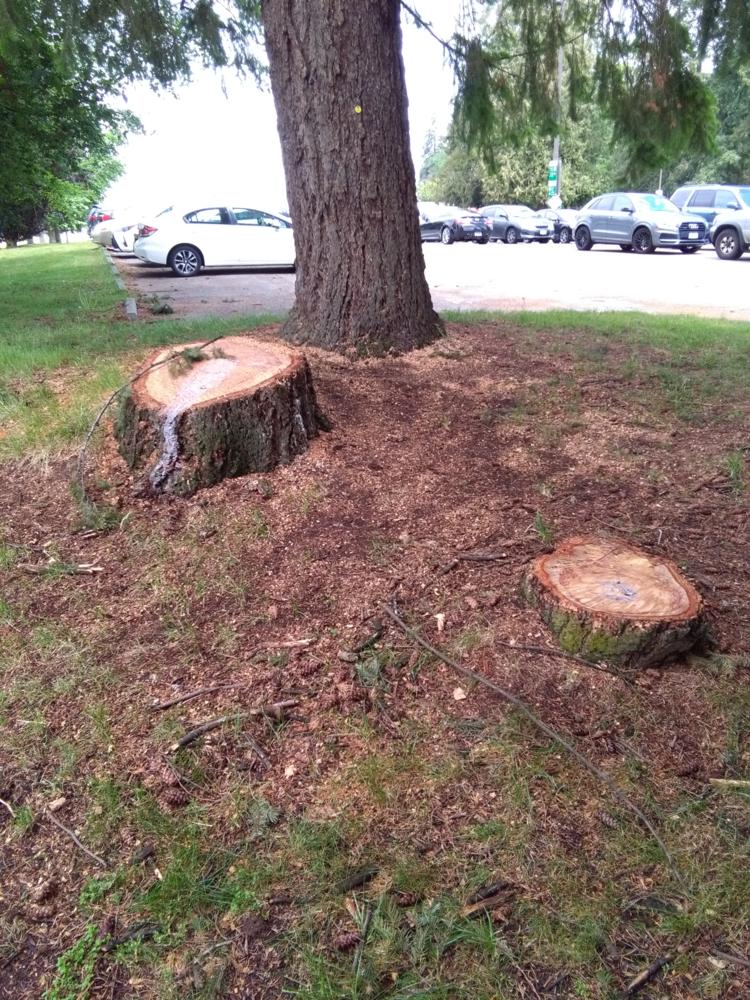Three Douglas fir trees were removed from the Parking Lot 1 area at the Abbotsford campus on Saturday, May 11 after it was discovered that the trees had become infected by a type of contagious tree rot.
Abbotsford grounds supervisor Christine Jones noticed that the campus trees were showing symptoms of illness.
“I noticed the trees were in decline — off color needles and thinning crowns,” said Jones. “Obvious symptoms have since developed — fruiting bodies, dieback, resin on trunks, bulging trunks, and sloughing bark.”
Consulting arborist Kelly Koome of Koome Urban Forestry was called in to examine the trees. Koome diagnosed the firs as being infected by Phaeolus schweinitzii, commonly known as velvet-top fungus.
Velvet-top fungus is an arboreal disease that is common in the Pacific North-West, and affects several conifer species, including Douglas fir, Ponderosa pine, and Engelmann spruce.
The fungus is spread via spores that are released from fruiting bodies that form within the tree. The disease progresses from the heart of the tree outward, so they may seem healthy to the untrained eye.
Symptoms usually manifest in trees that are over 100 years old, but they can become infected much earlier. The infection causes the wood to become brittle and root growth to be stunted by knobby growths at the root tips. These two symptoms make infected trees likely to topple over in high winds, either by being uprooted or breaking in two.
Since the infected Douglas firs were within a parking lot at UFV, this not only exposed other trees to infection, but also posed a danger to persons and vehicles using the parking lot, hence their immediate removal. The contaminated wood was taken off site to be burned or composted at high heat.
Several other areas of B.C. have seen outbreaks of velvet-top fungus, according to Jones, and the three Douglas firs that were removed are unfortunately not the last of UFV’s local epidemic. At least three more trees are slated for removal this summer, including several birch and western red cedar. The remaining trees will be kept under observation, but Jones expects several more will have to be removed over the next two to five years.
Trees on Chilliwack campus grounds are also suspected to be diseased, and an arborist’s report on the area is pending.
The UFV facilities department intends to replace the removed the Douglas fir trees with disease-resistant hardwood species, which will be planted in the fall. The new trees will not be in the same locations as the old ones, and there is a possibility that the entire parking lot area may be revamped in the future.
The US Forestry Service fact sheet on velvet-top fungus and how to deal with it notes that velvet-top fungus is neither invasive, being native to this region, nor is it a serious problem except on rare occasions. The fungus has a positive role in recycling aging trees and helping to provide habitat for cavity-nesting birds, decay-inhabiting insects, and other organisms.
Image: Aleister Gwynne/The Cascade


